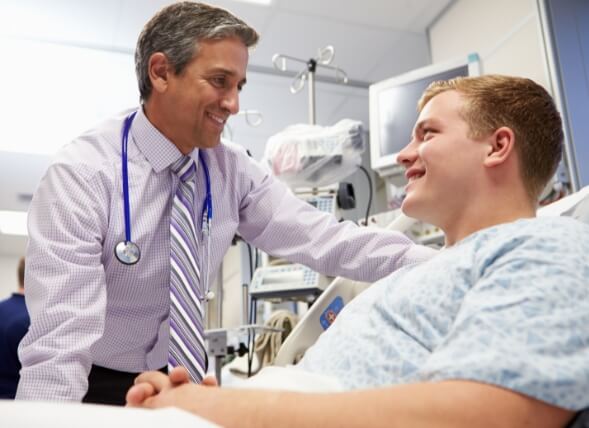Diabetes, a chronic metabolic disorder, affects millions of Americans. As per the Centers for Disease Control and Prevention (CDC), over 34 million people in the U.S. have diabetes, and approximately 1 in 5 of them are unaware they have it. Recognizing the early signs of diabetes is crucial for timely intervention and to prevent potential complications.
| Symptom | Science | Why It Happens | Impact |
|---|---|---|---|
| Frequent Urination | The kidneys filter out excess glucose in the bloodstream, leading to increased urine production. | When blood sugar levels rise above a certain point, the kidneys can’t reabsorb all the glucose. This excess glucose in the urine draws more water through osmosis. | The increased frequency and volume of urination can disturb sleep, affect daily activities, and lead to dehydration. |
| Increased Thirst | As frequent urination removes more fluids from the body, it leads to increased thirst, a mechanism to replace lost fluids. | This is the body’s response to counteract the dehydration caused by frequent urination. | Beyond just dehydration, not addressing this symptom can lead to electrolyte imbalances. |
| Unexplained Weight Loss | The body starts breaking down protein from the muscles and fat as an energy source when it can’t use glucose effectively. | Without adequate insulin action, glucose cannot enter the cells. As a result, the body seeks alternative energy sources. | Rapid and unexplained weight loss can lead to muscle wasting and nutritional deficiencies. |
1. Overview of Diabetes:
Diabetes mellitus manifests when the body cannot effectively use or produce insulin, leading to elevated blood glucose levels. The two primary types are:
- Type 1 Diabetes: The body fails to produce insulin. It usually starts in childhood or adolescence but can begin at any age.
- Type 2 Diabetes: The body does not use insulin properly, termed as insulin resistance. Initially, the pancreas makes extra insulin, but over time, it can’t make enough to keep blood glucose levels normal.
2. Early Signs and Symptoms of Diabetes:
Early recognition can make a significant difference in managing and possibly reversing the condition, especially in Type 2 diabetes. Here are some initial signs to be aware of:
-
1. Frequent Urination:
- The Science: The kidneys filter out excess glucose in the bloodstream, leading to increased urine production.
- Why It Happens: When blood sugar levels rise above a certain point, the kidneys can’t reabsorb all the glucose. This excess glucose in the urine draws more water through osmosis, increasing the volume of urine produced.
- Impact: The increased frequency and volume of urination can disturb sleep, affect daily activities, and lead to dehydration.
2. Increased Thirst:
- The Science: As frequent urination removes more fluids from the body, it leads to increased thirst, a mechanism to replace lost fluids.
- Why It Happens: This is the body’s response to counteract the dehydration caused by frequent urination.
- Impact: Beyond just dehydration, not addressing this symptom can lead to electrolyte imbalances.
3. Unexplained Weight Loss:
- The Science: The body starts breaking down protein from the muscles and fat as an energy source when it can’t use glucose effectively.
- Why It Happens: Without adequate insulin action, glucose cannot enter the cells. As a result, the body seeks alternative energy sources.
- Impact: Rapid and unexplained weight loss can lead to muscle wasting and nutritional deficiencies.
4. Constant Hunger:
- The Science: Despite eating, one might feel hungry because the body can’t use the glucose from food effectively.
- Why It Happens: As cells lack energy, hunger signals increase to motivate food intake.
- Impact: Overeating can exacerbate blood sugar levels, while the constant feeling of hunger affects concentration and mood.
5. Blurred Vision:
- The Science: High blood sugar causes the lens of the eye to swell, changing its shape and affecting its ability to focus.
- Why It Happens: Sugar buildup in the lens causes the swelling.
- Impact: If left untreated, prolonged high blood sugar can cause permanent vision damage.
6. Slow Healing:
- The Science: Elevated blood sugar reduces blood circulation and affects the body’s natural healing processes.
- Why It Happens: Reduced blood flow limits essential nutrients and oxygen reaching wounds.
- Impact: Slow wound healing increases the risk of infections and complications.
7. Fatigue:
- The Science: Cells deprived of sugar lack the necessary energy to function optimally.
- Why It Happens: Without glucose, cells resort to alternative, less efficient energy sources.
- Impact: Day-to-day activities become challenging, and quality of life can decrease.
8. Tingling or Numbness:
- The Science: High blood sugar levels can cause diabetic neuropathy or nerve damage.
- Why It Happens: Prolonged exposure to elevated glucose levels damages the small blood vessels that supply nerves.
- Impact: If untreated, this can lead to permanent nerve damage and loss of sensation.
9. Dark Skin Patches:
- The Science: Acanthosis nigricans is characterized by dark, velvety patches in body folds.
- Why It Happens: It’s associated with insulin resistance, where the body’s cells become less responsive to insulin.
- Impact: Beyond cosmetic concerns, these patches can be an early sign of diabetes risk.
| Type of Diabetes | Cause | Impact |
|---|---|---|
| Type 1 Diabetes | Immune system destroys insulin-producing cells. | Requires lifelong insulin therapy. Can lead to various complications. |
| Type 2 Diabetes | Insulin resistance and relative lack of insulin. | Managed through diet, exercise, and medications. Has many complications similar to type 1. |
| Gestational Diabetes | Develops in some women during pregnancy. | Increases risk of type 2 diabetes for mother and child. Complications during childbirth. |
| MODY | Monogenic diabetes due to changes in a single gene. | Different treatments based on MODY type. |
| Neonatal Diabetes | Diabetes diagnosed under age of six months, not autoimmune. | May be transient or permanent. |
| Secondary Diabetes | Results from another primary condition or treatment. | Treatment varies based on primary condition. |
3. Importance of Early Detection:
The CDC emphasizes the significance of early detection and management to reduce the risk of severe complications like cardiovascular disease, neuropathy, nephropathy, and retinopathy. Regular monitoring and maintaining optimal blood glucose levels can delay or even prevent these complications.
4. Taking the Next Steps:
If you or someone you know displays these symptoms, consider the following:
- Consultation: Schedule a visit with a healthcare professional. They can offer tests like the fasting glucose test, the A1C test, or the glucose tolerance test to diagnose diabetes.
- Lifestyle Modifications: Embracing a healthy lifestyle by adopting a balanced diet, regular physical activity, and weight management plays a pivotal role in managing diabetes.
- Stay Informed: CDC provides resources and updated information on diabetes management and prevention. Familiarize yourself with them to stay proactive about your health.
5. Conclusion:
Diabetes, while a chronic ailment, can be managed efficiently with early detection, consistent care, and a commitment to maintaining a healthy lifestyle. Stay vigilant to the signs, consult your healthcare provider regularly, and take proactive measures to ensure a fulfilling, healthy life.
References: Centers for Disease Control and Prevention (CDC).
Disclaimer: This blog is for informational purposes only and should not be considered as medical advice. Always consult with a medical professional for any health concerns.





